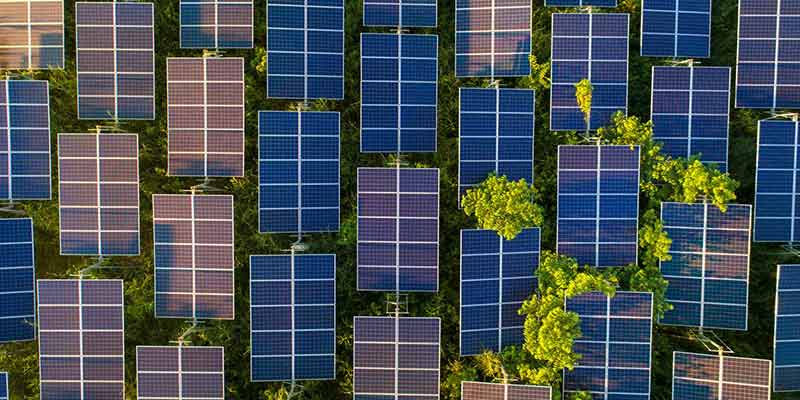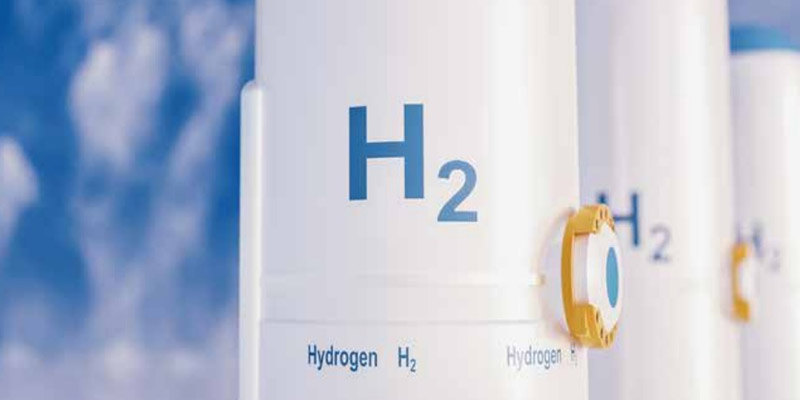- India
- Jan 01
Renewable energy investments may jump 83% in 2024
• According to power ministry estimates, India will witness more than 83 per cent increase in investments in renewable energy projects to around $16.5 billion in 2024 as the country focuses on energy transition to reduce carbon emissions.
• This is in line with India’s ambitious target of having 500 GW of renewable energy by 2030 and its resolve to reduce overall power generation capacity from fossil fuels to less than 50 per cent.
• India has committed a net zero emission target by 2070.
• Apart from solar and wind energy, India has increased its focus on green hydrogen in a big way to reduce dependence on fossil fuels, mainly diesel, which is required for long haul vehicles.
• India is a diesel-based economy in a way that most of the commercial vehicles for passenger and freight services are using diesel as the fuel.
India has enhanced its climate ambition manifold
• India is spearheading one of the world’s most ambitious clean energy transitions and remains steadfast in its commitment to combating climate change. Despite the adverse impacts of COVID-19 on the economy, India has enhanced its climate ambition manifold and embarked on a long-term strategy towards a Low Greenhouse Gas Emission Development Strategy by adopting a multi-pronged approach.
• Action on addressing climate action was initiated even before the Paris Agreement came into being. In 2008, India launched the National Action Plan on Climate Change (NAPCC), establishing eight National Missions, covering several initiatives and a slew of measures in the area of solar, water, energy efficiency, forests, sustainable habitat, sustainable agriculture, sustaining Himalayan ecosystem, capacity building and research and development (R&D).
• National Adaptation Fund for Climate Change (NAFCC), a central sector scheme, was initiated in 2015-16 to support adaptation activities in states and Union Territories of India that are vulnerable to the adverse effects of climate change. NAFCC is implemented in project mode, and to date, 30 projects have been sanctioned in 27 states and UTs with a total project cost of Rs 847.5 crore.
• The energy transition plan is complemented by numerous policies intended to improve the ecosystem to deploy promising technological innovations, like green hydrogen. The country has consistently modified/amended regulatory standards and adopted policy-level interventions to support the development and adoption of new technology.
India’s updated Nationally Determined Contribution (NDC)
• Nationally Determined Contributions (NDCs) are at the heart of the Paris Agreement. They embody efforts by each country to reduce national emissions and adapt to the impacts of climate change.
• NDC means national plans and pledges made by a country to meet the goal of maintaining global temperature increases to well below 2°C above pre-industrial levels, while aiming for 1.5°C to avoid the worst impacts of climate change.
• India submitted its first NDC to UNFCCC in October 2015. This was updated in August 2022. The 2015 NDC comprised eight goals, three of which were quantitative targets to be achieved up to 2030.
i) Cumulative electric power installed capacity from non-fossil sources to reach 40 per cent.
ii) Reduce the emissions intensity of GDP by 33 to 35 per cent compared to 2005 levels.
iii) Creation of additional carbon sink of 2.5 to 3 billion tonnes of CO2 equivalent through additional forest and tree cover.
• Demonstrating higher ambition in its climate action, India submitted its updated NDC on August 26, 2022. The new NDC with enhanced targets translates the vision of “Panchamrit” at the UNFCCC Conference of Parties (COP 26) in Glasgow in November 2021. The vision mentions sustainable lifestyles and climate justice to protect the poor and vulnerable from the adverse impacts of climate change.
These five commitments are:
i) India will reach its non-fossil energy capacity to 500 GW by 2030.
ii) India will meet 50 percent of its energy requirements from renewable energy by 2030.
iii) India will reduce the total projected carbon emissions by one billion tonnes from now on till 2030.
iv) By 2030, India will reduce the carbon intensity of its economy by less than 45 per cent.
v) By the year 2070, India will achieve the target of net zero.
National Green Hydrogen Mission
In January 2023, Prime Minister Narendra Modi-led Cabinet approved the National Green Hydrogen Mission with an outlay of Rs 19,744 crore. The Mission is expected to attract Rs 8 lakh crore of investment in the green hydrogen chain. India aims to produce 5 million tonnes of green hydrogen per annum in the next five years and the incentives would help bring down the cost.
What is green hydrogen?
• Although hydrogen is the lightest and most abundant element in the universe, it is rarely found in nature in its elemental form and always must be extracted from other hydrogen-containing compounds. It also means that how well hydrogen contributes to decarbonisation depends on how clean and green the method of production is.
Based on the sources and processes, hydrogen can be classified into various colours:
i) Black/Brown/Grey hydrogen is produced by coal or lignite gasification (black or brown), or via a process called steam methane reformation (SMR) of natural gas or methane (grey). These tend to be mostly carbon-intensive processes.
ii) Blue hydrogen is produced by natural gas or coal gasification combined with carbon capture storage (CCS) or carbon capture use (CCU) technologies to reduce carbon emissions.
iii) Green hydrogen is produced using electrolysis of water with electricity generated by renewable energy. The carbon intensity ultimately depends on the carbon neutrality of the source of electricity. Which means, the more renewable energy there is in the electricity fuel mix, the “greener” the hydrogen produced.
Significance of this Mission
• India has a unique opportunity to become a global leader in the hydrogen energy ecosystem. With proper policy support, industry action, market generation and acceptance, and increased investor interest, India can position itself as a low-cost, zero-carbon manufacturing hub, at the same time fulfilling its goal of economic development, job creation, and improved public health.
• The current impetus surrounding the hydrogen transition fits well within the context of a low-carbon economy, energy security, and the larger economic development ambition of the nation.
• Hydrogen demand in India could grow more than four-fold by 2050, representing almost 10 per cent of global hydrogen demand. Initial demand growth is expected from mature markets like refinery, ammonia, and methanol, which are already using hydrogen as industrial feedstock and in chemical processes.
• The cumulative value of the green hydrogen market in India could be $8 billion by 2030 and $340 billion by 2050.
Manorama Yearbook app is now available on Google Play Store and iOS App Store



